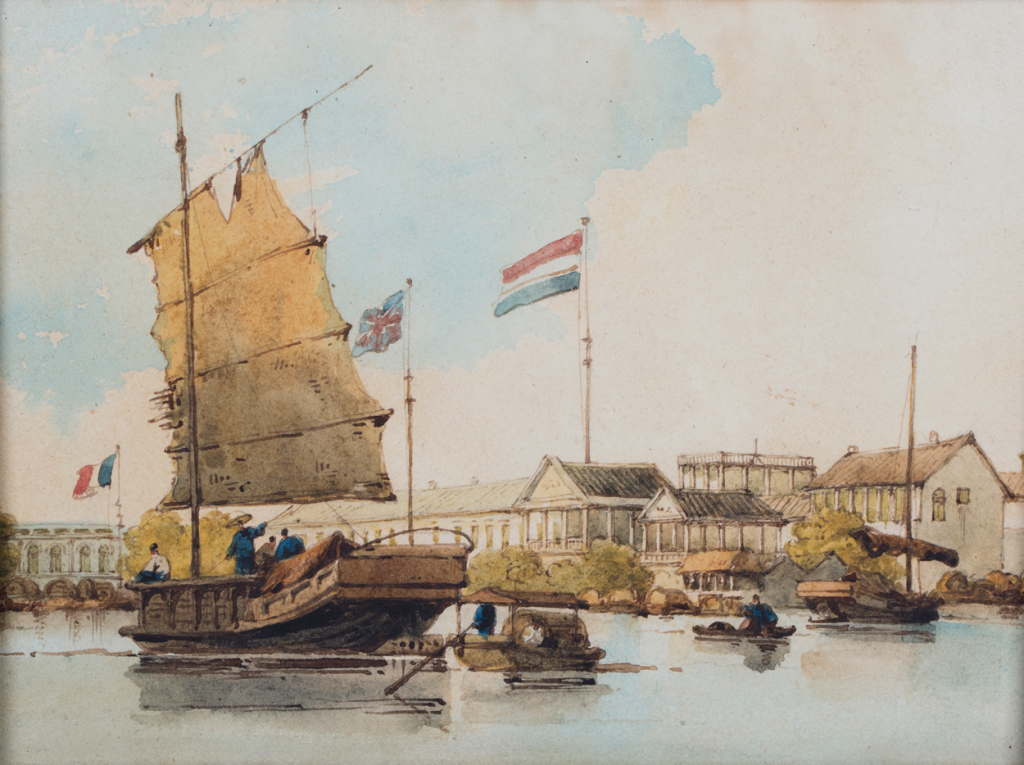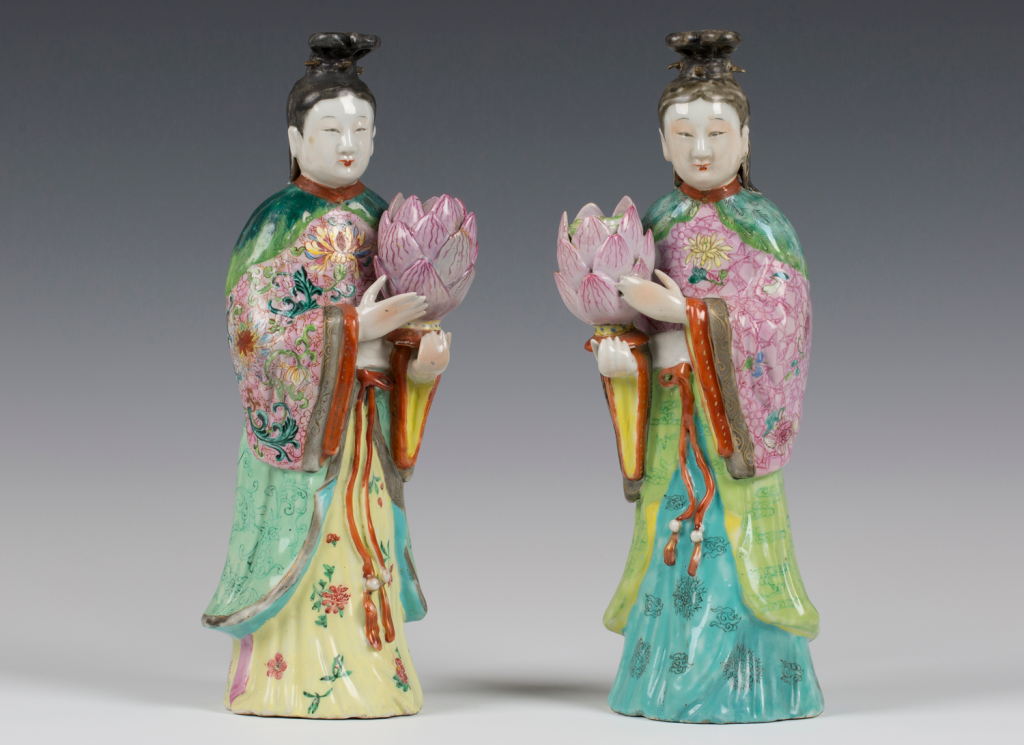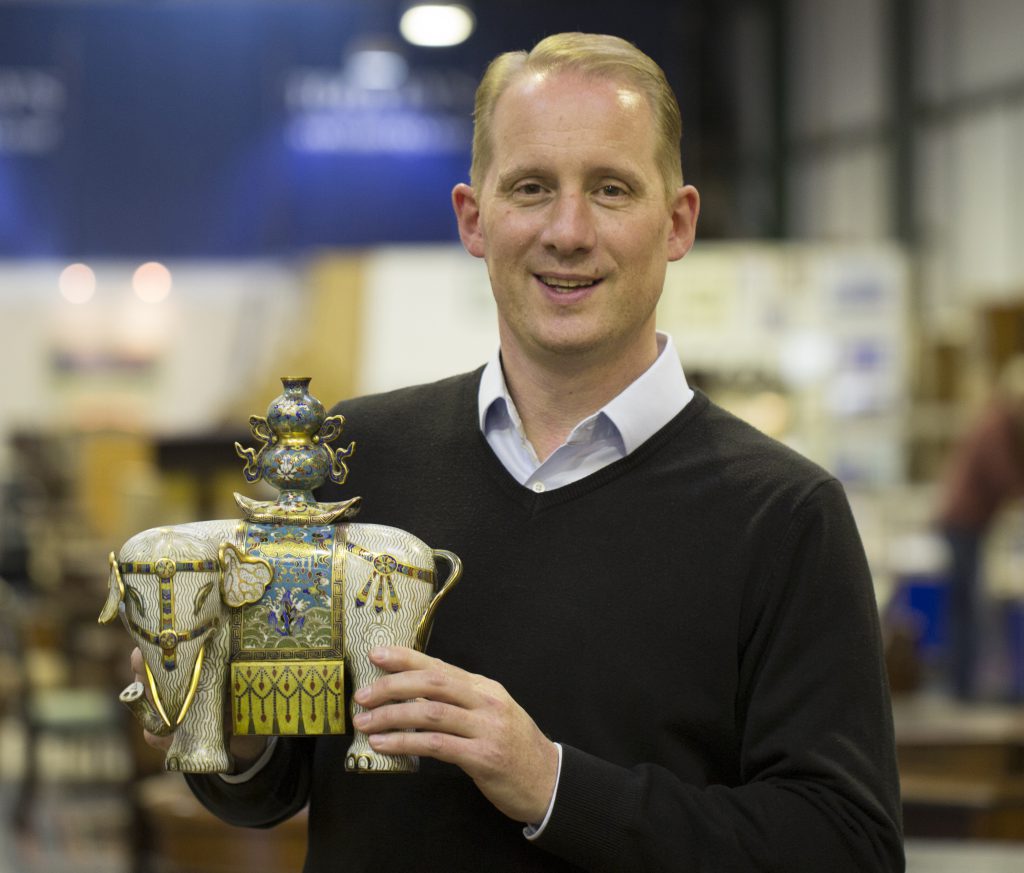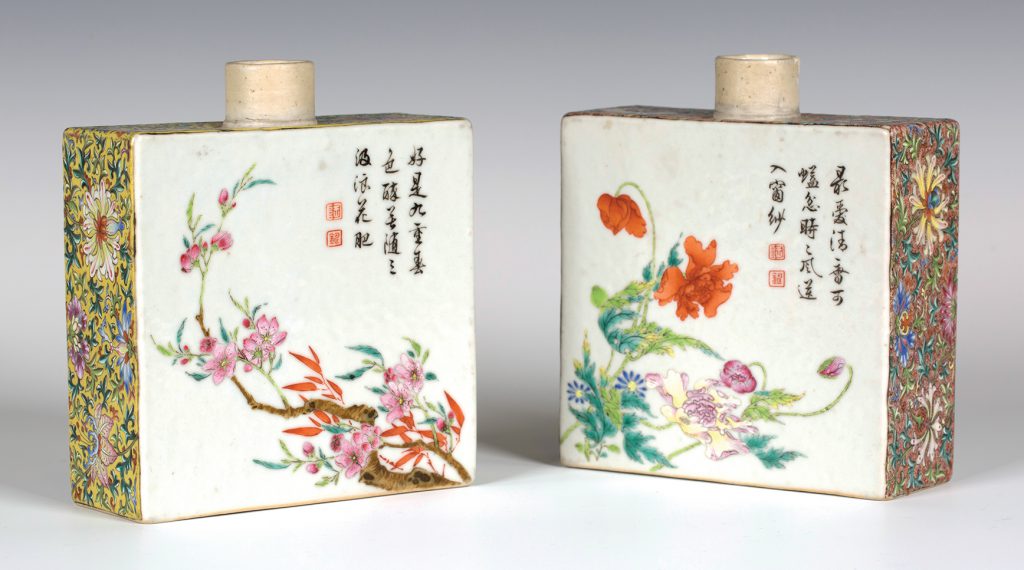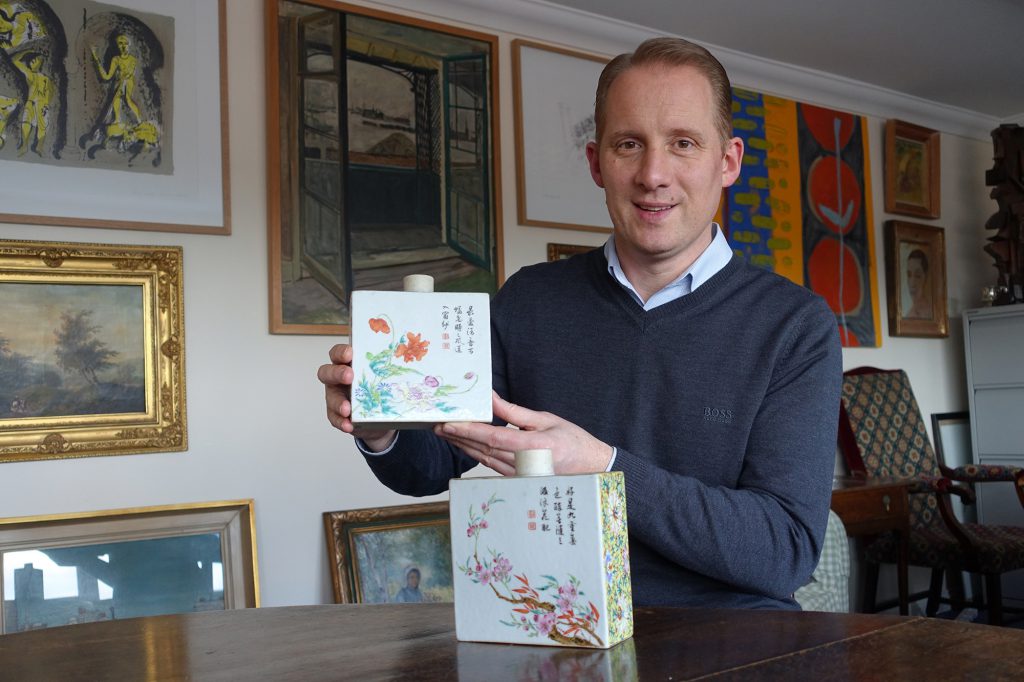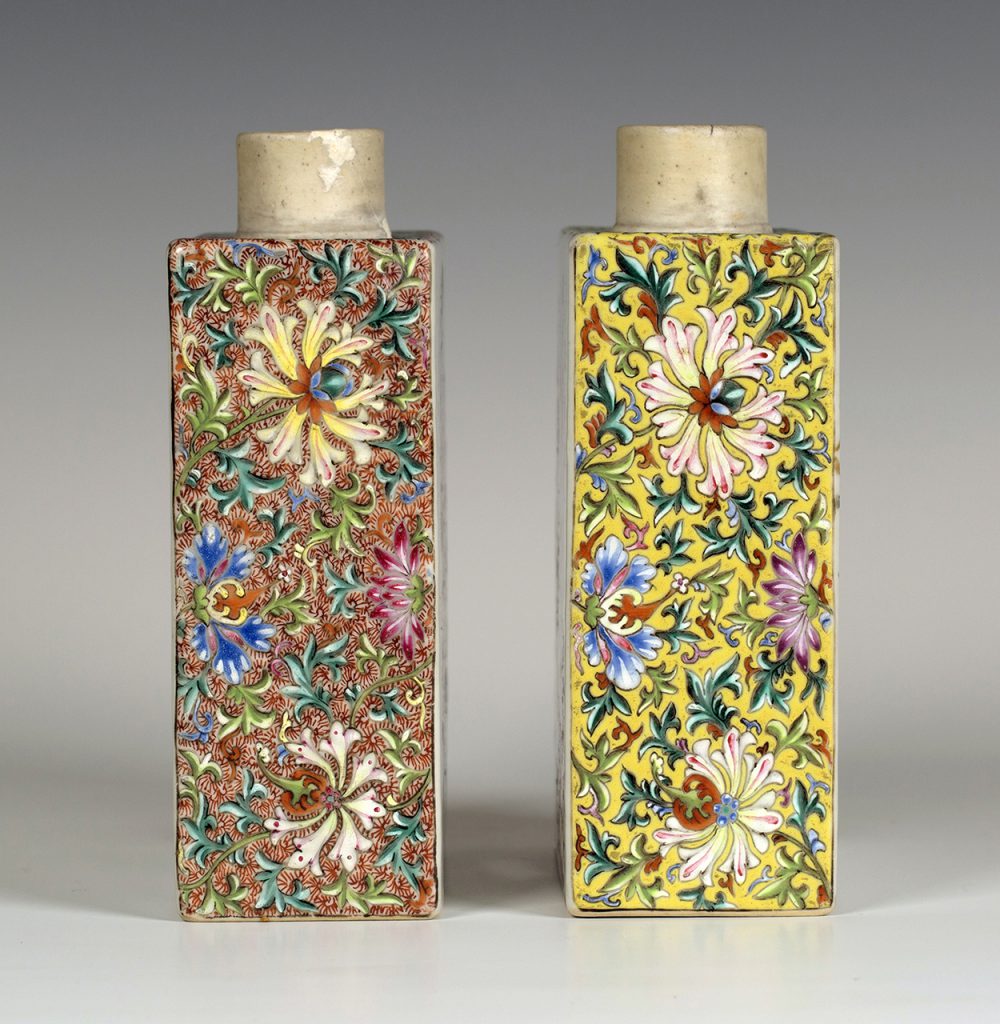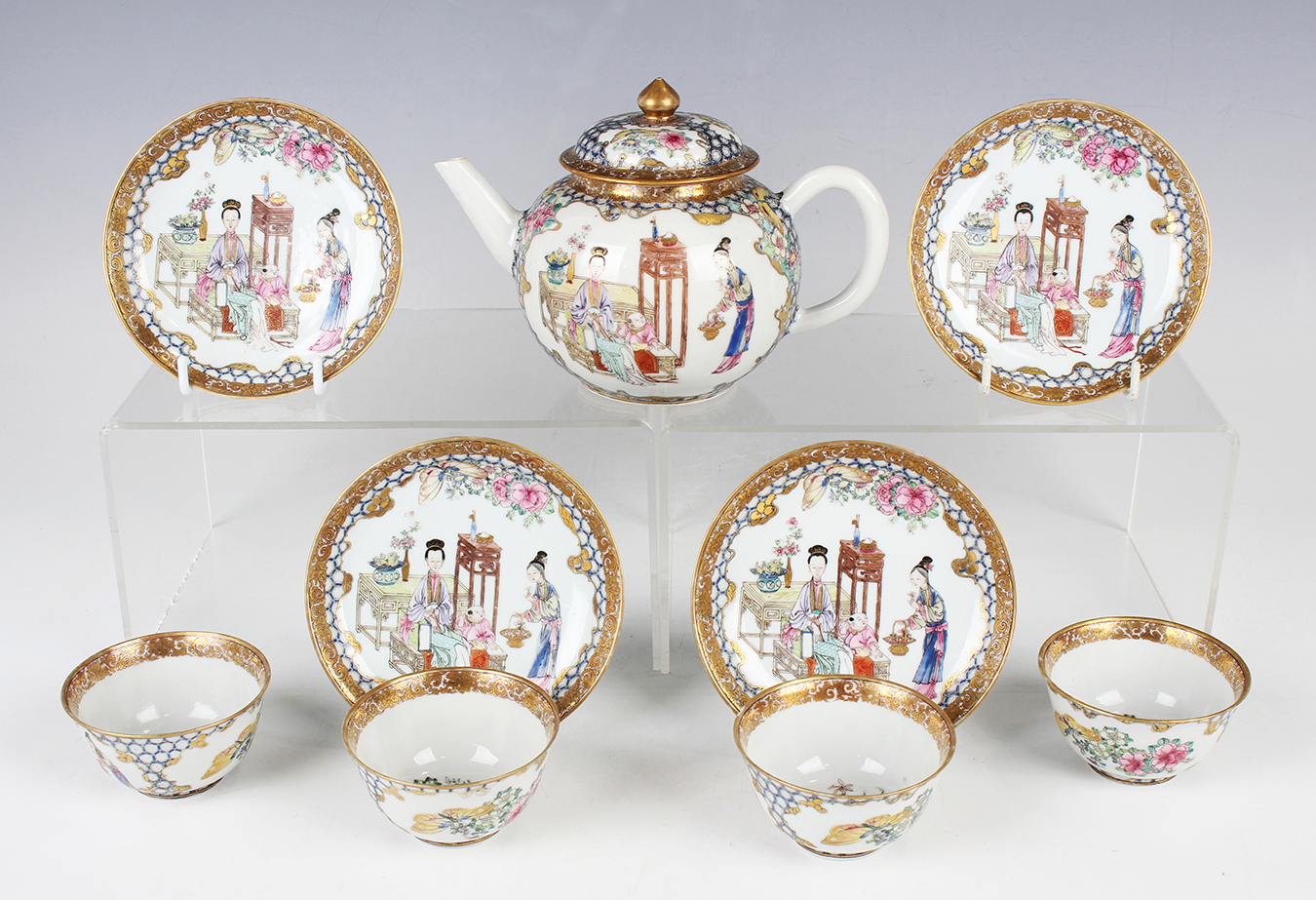
The reign of the Kangxi Emperor saw a renewal in the manufacture and decoration of porcelain with a huge shift from the five colour schemes of earlier wares to more colourful enamels and new designs.
The emperor Kangxi’s reign (1661-1722) was the longest in Chinese history. He re-established the imperial porcelain factory at Jingdezhen. Foreign trade with Britain and Europe reached new heights.
Three dimensional porcelain objects were transformed with narrative compositions of exceptional quality and complexity which reveal themselves as the piece is turned. The tradition of the gradual unwinding of the hand scroll was transposed onto porcelain where the stories were depicted in vibrant colourful enamels or underglaze blue.
Famille verte is identified by its vivid green overglaze enamels often combined with other polychrome enamels.
The repaired Kangxi period famille verte rouleau vase was sold at Toovey’s for £13,000 and is a typical example. The body is finely painted with a continuous narrative scene of figures in and outside a pavilion complex beside a river, rocks and trees.

It was during the Kangxi period that figures became central to the decoration of porcelain marking a significant aesthetic change. The narrative compositions are often hierarchical leading the viewer’s eyes to the central characters. But this artistry and attention to detail informs every aspect of the decorative scheme. Even the minor figures and details are beautifully depicted.
Eggshell porcelain is an extraordinarily thin pure-white Chinese porcelain of very fine quality. Eggshell porcelain called t’o-t’ai in Chinese, meaning bodiless, was first made in the early Ming Dynasty, probably during the reign of the Yongle Emperor (1403-1424).
The later Chinese eggshell porcelain famille rose tea service dates from the reign of the Yongzheng Emperor (1722-1735) and realised £18,000 at Toovey’s. Each piece is finely enamelled with panels depicting a lady and boy seated in an interior with a female attendant and furniture, reserved against a blue cell diaper ground incorporating butterflies and flowers.
Chinese famille rose porcelain is characterised by the decorative use of pink overglaze enamels. It would reach its heights in the 18th century and was predominately made at Jingdezhen remaining popular into the 19th century.
China’s colourful porcelain delighted British and European connoisseurs in the 17th, 18th and 19th centuries. Today this porcelain is still celebrated by international collectors from China and across the world, and prices remain strong.
